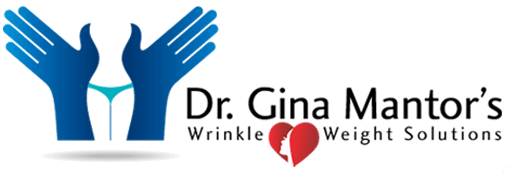Semaglutide 2.4 mg 'Ushers in a New Era in Medical Obesity Care'
The recently licensed weight-loss drug semaglutide 2.4 mg/week (Wegovy, Novo Nordisk) "is likely to usher in a new era in the medical treatment of obesity," stated Lee M. Kaplan, MD, PhD, at the virtual American Diabetes Association (ADA) 81st Scientific Sessions.
Kaplan discussed the clinical implications of caring for patients with obesity now that the glucagon-like peptide-1 (GLP-1) receptor agonist is approved in the United States for weight loss.
Weight loss with semaglutide 2.4 mg was twice that achieved with liraglutide 3 mg (Saxenda, Novo Nordisk) — that is, roughly a 10% to 15% weight loss at 68 weeks, said Kaplan, who was not involved in the pivotal STEP clinical trials of the agent.
"I think as we start to see more data come in over the next couple of years," including from the cardiovascular outcome trial SELECT, he continued, "we'll be able to use the data to create a nuanced [individualized patient treatment] approach, but we'll also be able to use our clinical experience, which will grow rapidly over the next few years."
In future, semaglutide is likely to be combined with other drugs to provide even greater weight loss, predicts Kaplan, director of the Obesity, Metabolism, and Nutrition Institute at Massachusetts General Hospital in Boston.
In the meantime, "to be effective, semaglutide needs to be used," he stressed, while noting that responses to the drug vary by individual, and so this will need to be taken into account.
"Obesity needs to be recognized as a disease in its own right, as well as a risk factor for numerous other diseases, [and] equitable access to obesity treatment needs to be broadened," he emphasized.
Four Pivotal Phase 3 trials
As previously reported, four pivotal 68-week, phase 3 clinical trials in the Semaglutide Treatment Effect in People With Obesity (STEP) program tested the safety and efficacy of subcutaneous semaglutide 2.4 mg/week in more than 4500 adults with overweight or obesity.
The trials have been published in high profile journals — the New England Journal of Medicine (STEP 1), The Lancet (STEP 2), and JAMA (STEP 3, STEP 4) — said Robert F. Kushner, MD.
"I would encourage all of you to download and read each of these trials on your own," said Kushner, professor of medicine and medicine education at Northwestern University Feinberg School of Medicine, in Chicago, Illinois, and coauthor of STEP 1, before presenting a top-level review of key results.
STEP 1 examined weight management, STEP 3 added a background of intensive behavioral therapy, STEP 4 investigated sustained weight management, and STEP 2 (unlike the others) investigated weight management in patients with type 2 diabetes, he summarized.
In STEP 1, patients who received semaglutide had an average 15% weight loss, and those who stayed on the drug had a 17% weight loss, compared with the 2.4% weight loss in the placebo group.
"One third of individuals in the trial achieved at least a 20% weight loss or more," Kushner said, which is "really phenomenal."
The results of STEP 3 "suggest that semaglutide with monthly brief lifestyle counseling alone is sufficient to produce a mean weight loss of 15%," he noted, as adding a low-calorie diet and intensive behavior therapy sped up the initial weight loss but did not increase the final weight loss.
A post-hoc analysis of STEP 2 showed "it's clear that improvement in A1c" is greater with at least a 10% weight loss versus a smaller weight loss, Kushner said. A1c dropped by 2.2% versus 1.3%, with these two weight losses respectively.
In STEP 4, after dose escalation to 2.4 mg at 20 weeks, patients had lost 10.6% of their initial weight. At 68 weeks, those who were switched to placebo at 20 weeks had lost 5.4% of their initial weight, whereas those who remained on semaglutide had lost 17.7% of their initial weight.
This shows that "if you remove the drug, the disease starts to come back," Kushner pointed out.
Nausea, the most common side effect, occurred in 20% of patients, but was mostly mild or moderate, and gastrointestinal effects including constipation, vomiting, and diarrhea were transient and occurred early in the dose escalation phase.
Large Individual Variability, Combination Therapies on Horizon
Kaplan pointed out, however, that "like [with] other anti-obesity therapies...there's a large patient-to-patient variability."
A third of patients exhibit more than 20% weight loss, and 10% exhibit more than 30% weight loss — approaching the efficacy of b
However, nearly 10% of patients without diabetes and upwards of 30% of patients with diabetes will experience less than 5% weight loss, he said.
Therefore, "success or failure in one patient doesn't predict response in another, and we should always remember that as we treat different patients with these medications," Kaplan advised clinicians.
A recent phase 1b study suggests that combination therapy with semaglutide and the amylin agonist cagrilintide ups weight loss, as previously reported.
In this short trial with no lifestyle modification, it took 16 weeks for patients to reach full dosing, and at 20 weeks, patients on semaglutide had lost 8% of their initial weight, whereas those on combination therapy had lost 17% of their initial weight.
"There's hope that, in combination with cagrilintide and probably with several other agents that are still in early development, we'll be seeing average weight loss that is in the range of that seen with bariatric surgery," Kushner said.
Case 1
ou have a patient with type 2 diabetes, a body mass index (BMI) of 32, 33 kg/m2, and an A1c of 7.5% or 8% on metformin. Would you use semaglutide 1 mg (Ozempic, Novo Nordisk) that is indicated for type 2 diabetes, or would you use semaglutide 2.4 mg that is indicated for obesity and risk factors?
"We have the answer to that from STEP 2," said Melanie J. Davies, MB ChB, MD, professor of diabetes medicine at the University of Leicester, UK, who led the STEP 2 trial.
"For some patients, the 1-mg dose, which we use routinely in the clinic, may be reasonable to get good glycemic control for cardiovascular protection and will obviously achieve some weight loss. But if you really want to go for the weight-related comorbidities, then the 2.4-mg dose is what you need," she said.
Dr Melanie J. Davies
"A lot of [clinicians] might say: 'I'll see how [the patient goes] with the 1-mg dose, and then maybe if they're not losing the weight and not getting to glycemic target, then maybe I'll switch to 2.4 mg,'" said John Wilding, MD, who leads clinical research into obesity, diabetes, and endocrinology at the University of Liverpool, in the UK, and led the STEP 1 trial.
"But the STEP 2 data show very clearly that you get almost the same A1c," Rosenstock interjected. "I would go for 2.4 mg. The patient has a BMI of 32, 33 kg/m2. I would hit hard the BMI. We need to change that paradigm."
"For other diseases we don't always go to the maximum dose that's available. We go to the dose that's necessary to achieve the clinical endpoint that we want," Kaplan noted. "I think one of the challenges is going to be to learn how to clinically nuance our therapy the way we do for other diseases."
"That is the usual thinking," Rosenstock agreed. But "with the 2.4-mg dose, one third get a 20% reduction of BMI, and 10% get almost a 30% reduction — and you [aren't] going to see that with semaglutide 1 mg!"
"That's true," Kaplan conceded. However, a patient with a relatively low BMI of 32, 33 kg/m2 may not need the higher dose, unlike a patient who has a BMI of 45 kg/m2 and diabetes. But we're going to find that out over the next couple of years, he expects.
Case 2
Dr John Wilding
You have a patient with a BMI of 31 kg/m2 who is newly diagnosed with type 2 diabetes. Why should you start them with metformin? Why won't you start them with something that will directly tackle obesity and get the patient to lose 20 pounds and for sure the blood sugar is going to be better?
"I think if I have someone who is really keen to put their diabetes into remission," Wilding said, "this would be a fantastic approach because they would have a really high chance of doing that."
The prediabetes data from STEP showed that "we can put a lot of people from prediabetes back to normal glucose tolerance," Wilding noted. "Maybe we can put people with early diabetes back to normal as well. I think that's a trial that really does need to be done," he said.
"I think you have to remember that of the millions and millions of people with obesity, a very small portion are currently treated with anti-obesity medication, and an even smaller portion are getting bariatric surgery," Kaplan replied.
"In the United States, 90% of people who get bariatric surgery are self-referred," he said, so, "I think initially we are not going to see much of a change" in rates of bariatric surgery.


















